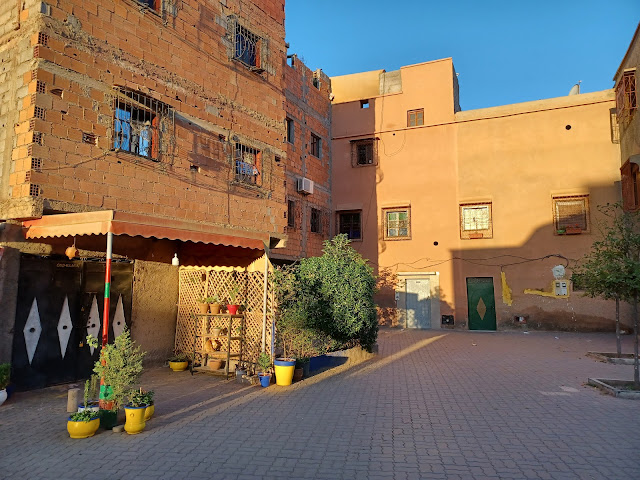Maroc - March 2023
Following on from a trip to the Oued Souss region last October, this time it was the Atlas Mountains and the Tagdilt Track - a path well trodden within the birding community. The sites were relatively easy to find, the birds however less so and time was tight.
After a smooth and punctual flight from Gatwick on easyJet, and a night spent in a riad close to the airport, the next day was a short walk to the airport and the hire-car pick up for the first stop at Oukaimeden in the Atlas Mountains.
Oukaimeden swarmed with local visitors revelling in the residual snow that had largely disappeared but was sufficient enough for sledging and skiing at the higher levels. Feeling a bit disoriented, the landscape was vast and mountainous. Red-billed chough and alpine chough swirled around at height in impressive numbers.
Another sought-after species that was slightly more difficult to locate was the Atlas horned lark, a sub-species of the shore lark finally located further up the slopes.
Breaking journey at Ait Ourir for the night, the next couple of days were spent at the brilliant Boumalne Dades Birds riad, offered primarily for birders, particularly Mustafa who was extremely knowledgeable providing valuable local gen.
After a smooth and punctual flight from Gatwick on easyJet, and a night spent in a riad close to the airport, the next day was a short walk to the airport and the hire-car pick up for the first stop at Oukaimeden in the Atlas Mountains.
Oukaimeden swarmed with local visitors revelling in the residual snow that had largely disappeared but was sufficient enough for sledging and skiing at the higher levels. Feeling a bit disoriented, the landscape was vast and mountainous. Red-billed chough and alpine chough swirled around at height in impressive numbers.
Pushing through the throng while evading the hawkers, the crimson-winged finch foraged around the market stalls on scraps, largely remnants of nuts spilled off the wooden trellis tables, the local sellers shooing them away as irritating pests whilst standing there in the midst snapping away delighted to have seen this local speciality.
Stopping off at Parc Oukaimeden, there was no sign of Levaillant's woodpecker, a species that eluded me for the entire trip despite relentless searching and a couple of occasions where it called close to my vantage point. It was very frustrating.
An offer of half a day guiding was far too good to turn down, so off we went.... to a rubbish dump.
Then for some more local gems inhabiting the rocky terrain, terracotta elevations that held some real quality. The search started for pharoah eagle owl, the scope sweeping through every crevice, but initially with no success. A pair of mourning (maghreb) wheatear were present on the slopes and a lanner had set up a nest on a ledge
It was rank. Refuse scattered across the impressive steppe landscape, the Atlas mountains standing tall in the distance. It was all very incongruous, not least as the birdlife here is rather impressive.
Scampering around the detritus were thick-billed lark, temminck's lark and Mediterranean short-toed lark. Red-rumped wheatear sat along the fenceline and desert wheatear were relatively common and widespread.
Further along the track, it was all very still and eerily quiet with just the faintest calls of distant birds. Mustafa was switched onto this and heard a singing greater hoopoe lark that we finally tracked down with two birds seen during our time there.
A really great bird to see and hear, it's distant subtle melodic song puncturing the silence. Further along, five pristine cream-coloured courser scampered across the arid substrate, beautifully crowned and delightfully creamy.
The slow drive along the track continued, attempts to find sandgrouse spp were in vein, it was just a captivating experience searching through the barren landscape, bemused by how there was any birdlife out here of any quality.
Onto the next site, further up the road for some more specialities. A few trumpeter finch were loafing around the scree, exclaiming their hilarious refrain.
A couple of white-crowned wheatear and a black wheatear were also in song.
We walked on further, Mustapha was in charge of the scope, he knew what to do and where to look. An area that was, by his admission, previously unchartered, produced an owl, sitting low down in a crevice that required the elevation to see it. It stared at us, well it appeared to do so, looking austere and authoritative, and an inspired find.
































Comments
Post a Comment